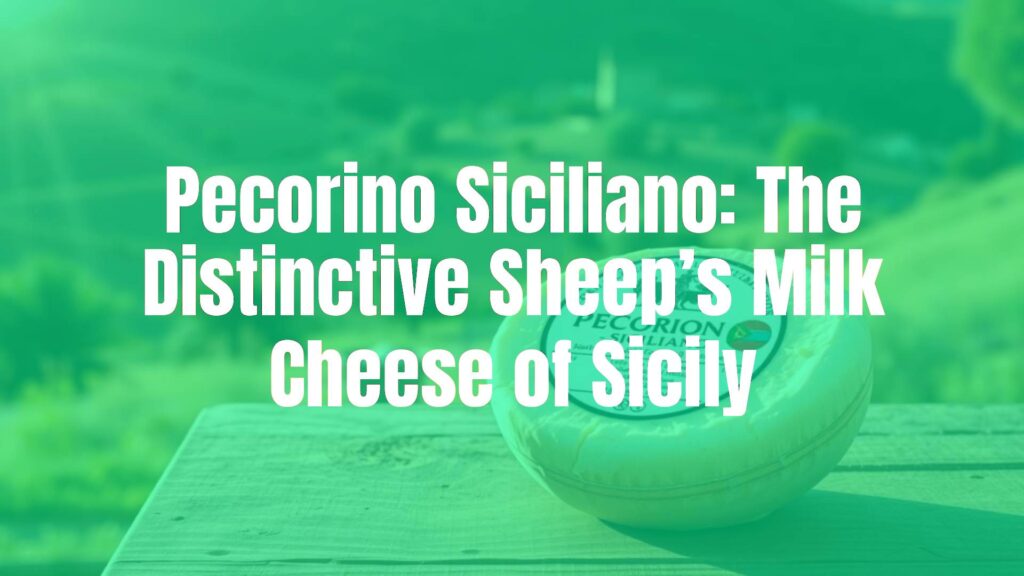Introduction to Pecorino Siciliano
Pecorino Siciliano is one of Italy’s oldest and most celebrated traditional cheeses, proudly hailing from the rugged countryside and sun-drenched pastures of Sicily. Crafted exclusively from sheep’s milk (“pecora” in Italian means “sheep”), this cheese is instantly recognizable by its dense texture, robust flavor, and unique cylindrical shape, typically marked by distinctive basket-like imprints on its rind. Deeply intertwined with Sicilian agricultural heritage, Pecorino Siciliano is more than a culinary delight—it’s a symbol of the island’s rural traditions and artisanal expertise.
Historical Origins and Regional Identity
The roots of Pecorino Siciliano trace back over two millennia to the ancient Greeks and Romans, who extolled the virtues of Sicilian sheep’s cheese. Throughout history, the cheese has played a critical role in local diets and economic activity, with methods passed down through farming families for generations. Today, Pecorino Siciliano boasts DOP (Denominazione di Origine Protetta) status, recognizing its protected designation of origin and assuring its production remains anchored in the Sicilian terroir.
Production and Characteristics
Produced between October and June when the island’s pastures are lush, Pecorino Siciliano is made using raw, full-fat sheep’s milk. After adding rennet, the curds are traditionally hand-pressed into woven reed baskets, which imprint the characteristic grooves onto the rind. The cheese is salted and aged for several months, during which time it develops a firm and compact texture, ranging from pale yellow to straw-colored hues. Its aroma is intensely savory, and as it matures, Pecorino Siciliano acquires pronounced tanginess and spiciness, often with lingering notes of grass and wild herbs reflecting the sheep’s diverse diet.
Cultural Importance and Culinary Uses
Pecorino Siciliano is woven into the fabric of Sicilian culinary life. Historically, it was food for shepherds and farmers, prized for its nutritional density and long shelf life. Today, it remains a staple on Sicilian tables, enjoyed both on its own and as an integral ingredient in many regional dishes. It is often grated over pasta with tomato-based sauces, added to rustic vegetable casseroles, or served as part of antipasti platters alongside olives, cured meats, and local breads.
Traditional Pairings and Serving Suggestions
This cheese’s assertive taste is ideally matched with bold red wines, such as Sicilian Nero d’Avola or Frappato. For a classic antipasto, Pecorino Siciliano is traditionally paired with honey or fig jam to balance its saltiness, or with fresh seasonal fruits. When young, it can be enjoyed as a table cheese, while the aged variety (“stagionato”) is perfect for grating and further intensifies the flavors of soups and baked dishes.
Variations and Distinct Local Styles
While all authentic Pecorino Siciliano must come from the island, there are subtle differences from one producer to another, influenced by local microclimates and grazing pastures. Some artisanal versions are rubbed with olive oil or black pepper during aging, echoing traditional preservation methods. It is distinct from other Italian pecorino cheeses—such as Pecorino Romano or Pecorino Toscano—not only in flavor but also in its unique production and aging practices rooted specifically in Sicilian customs.
Appreciating Pecorino Siciliano
To fully savor Pecorino Siciliano, allow it to come to room temperature before serving, which enhances its aroma and lets the full spectrum of flavors emerge. Whether as a stand-alone cheese, a flavoring in Sicilian classics, or as a memorable addition to a cheese board, Pecorino Siciliano remains a revered ambassador of Sicily’s rich pastoral traditions and culinary ingenuity.

